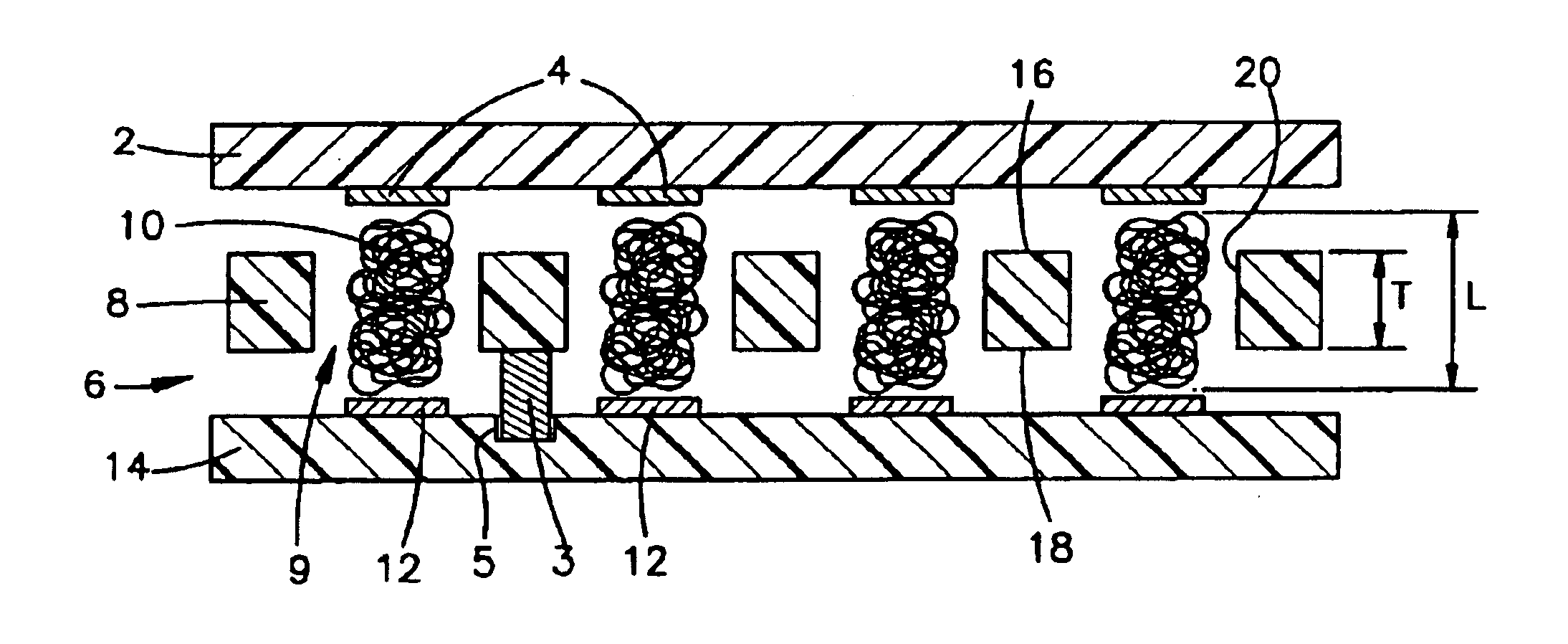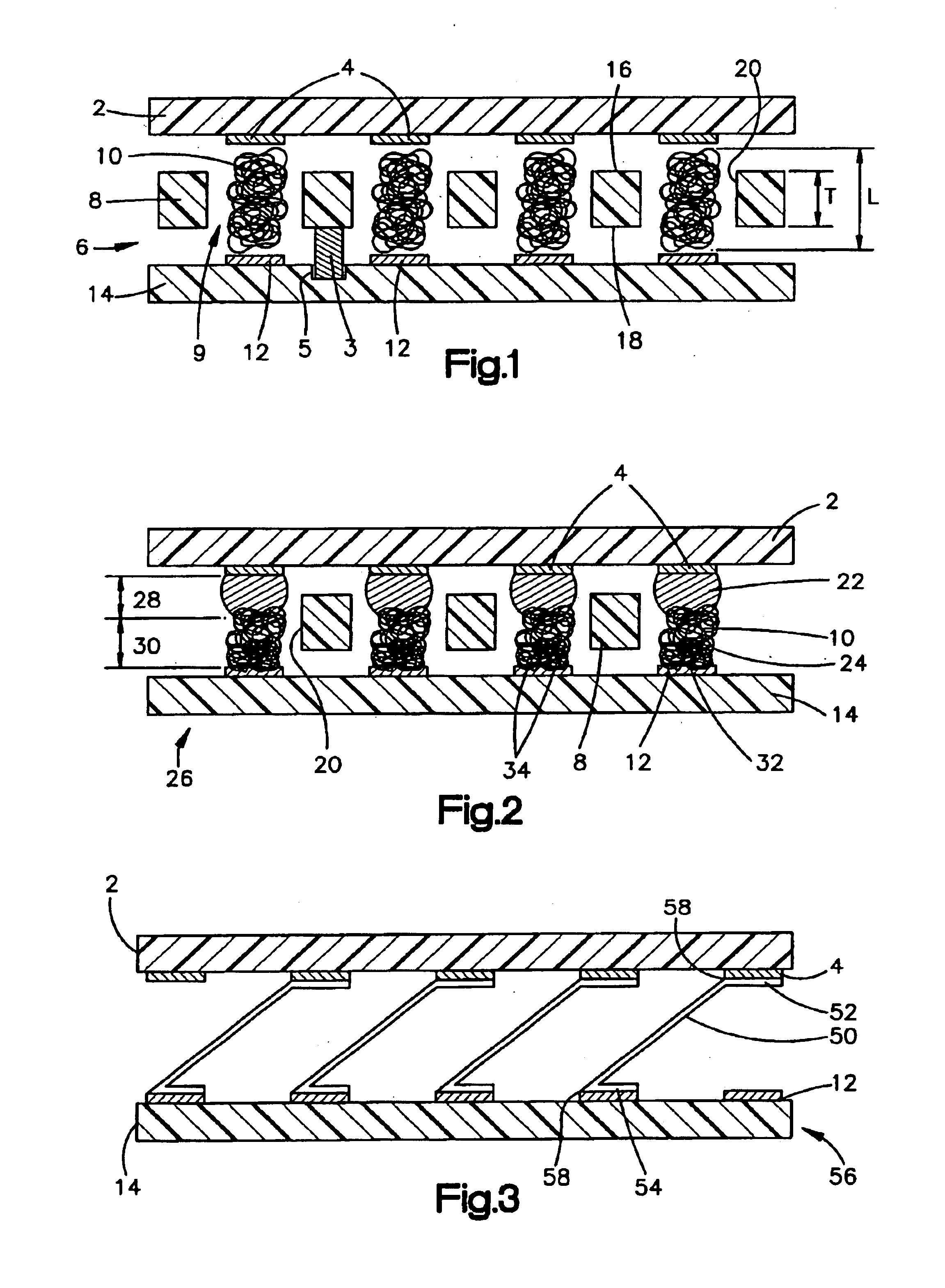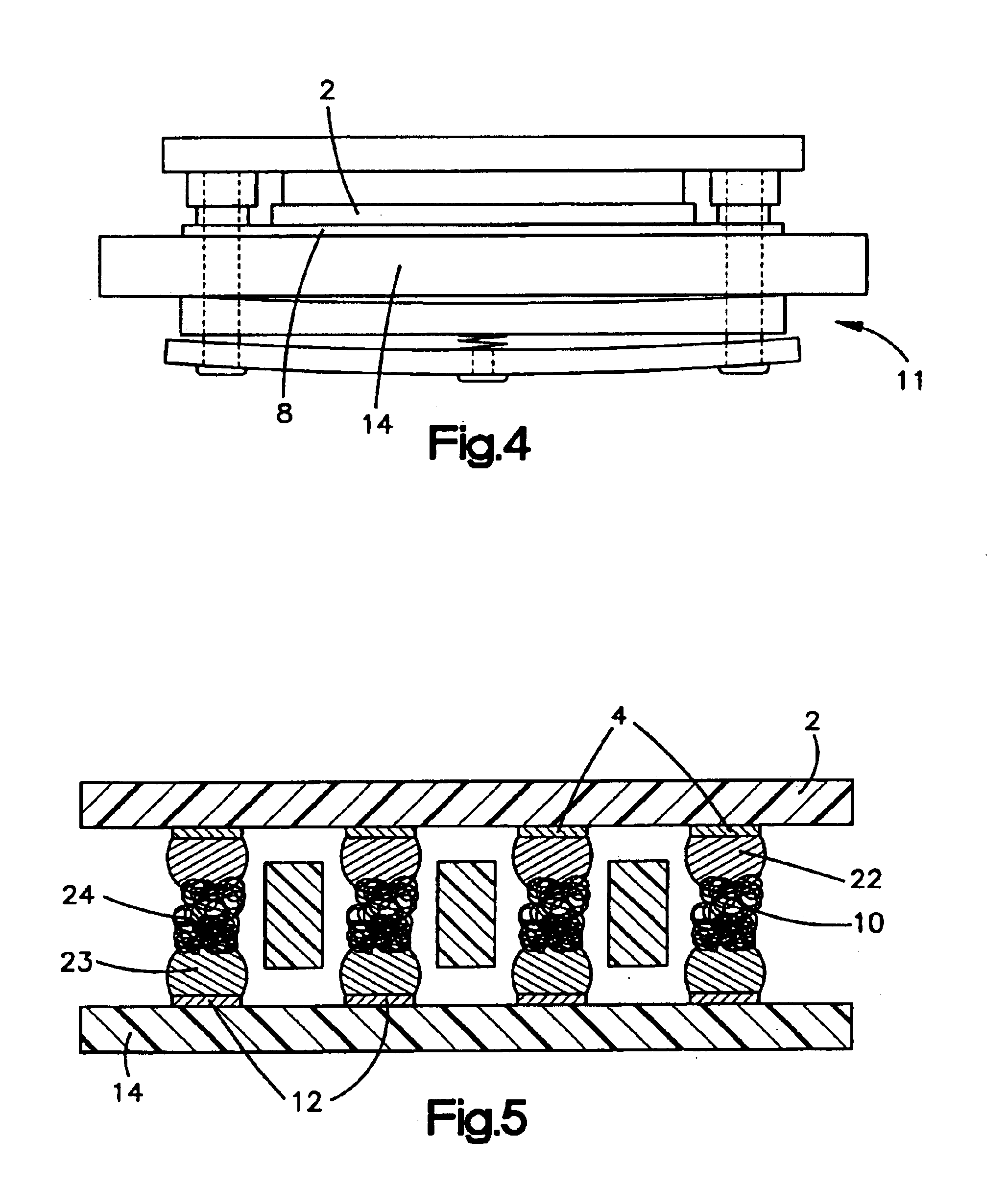Enhanced electrical/mechanical connection for electronic devices
a technology of electrical/mechanical connection and electronic device, which is applied in the direction of fixed connection, coupling device connection, printed circuit manufacturing, etc., can solve the problems of assembly being subject to heating and cooling cycles, adhesive or solder may "wick" through the connector array, and in undesirable fashion,
- Summary
- Abstract
- Description
- Claims
- Application Information
AI Technical Summary
Benefits of technology
Problems solved by technology
Method used
Image
Examples
Embodiment Construction
(not shown), an electrically conductive adhesive, specifically Ablebond 8175 made by Ablestick Laboratories, is applied to the PCB contacts 12. The adhesive is applied by a stencil deposit method, using a 0.005" thick stencil with an array of 0.020" diameter apertures corresponding to the PCB contact 12 array. The adhesive deposits are 0.020" in diameter, are hemispherically shaped and are between 0.003-0.004" tall. After aligning mechanical alignment pins 3 located on the interposer S with receiving holes 5 formed on the PCB 14, the conductors 10 are brought into contact with the electrically conductive adhesive deposit After adhesive cure, four point probe measurements of the interconnection between PCB 14 backside and interposer 8 backside showed a low contact resistance in the range of about 5 to about 40 milliohms. (There is some variable probe contact resistance in these measurements that may be as high as about 20 to about 30 milliohms). The PCB contacts 12 were gold plated a...
PUM
| Property | Measurement | Unit |
|---|---|---|
| diameter | aaaaa | aaaaa |
| diameter | aaaaa | aaaaa |
| diameter | aaaaa | aaaaa |
Abstract
Description
Claims
Application Information
 Login to View More
Login to View More - R&D
- Intellectual Property
- Life Sciences
- Materials
- Tech Scout
- Unparalleled Data Quality
- Higher Quality Content
- 60% Fewer Hallucinations
Browse by: Latest US Patents, China's latest patents, Technical Efficacy Thesaurus, Application Domain, Technology Topic, Popular Technical Reports.
© 2025 PatSnap. All rights reserved.Legal|Privacy policy|Modern Slavery Act Transparency Statement|Sitemap|About US| Contact US: help@patsnap.com



